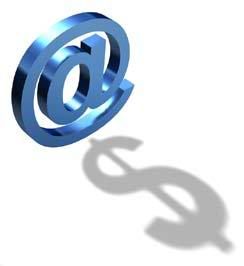
No messy garage sales; No disturbing phone calls from classified ads. Simply bring items to one of locations (local pick-ups available). With over 140 million users, eBay is the perfect place to sell your items.

Definition of Internet auction fraud includes the following wrong doings:
-Non-delivery of items
-Misrepresentation of the value of an item
-Triangulation: involvement of three parties in which perpetrator steals goods from online merchant
-Fee stacking: adding extra charges once bidding is complete
-Sale of black-market goods
-Multiple bidding by same buyer under different aliases
-Shill bidding: false bidding by the sellerThe IFCC says that in 2000, auction fraud cost consumers $4 million.
As of April 2001, the IFCC has received 4,000 online auction complaints which have cost roughly $3.2 million. The Center found that there are six major categories of e-auction fraud. Though the sale of beanie babies (plush children's toys) accounts for the greatest percentage share of auction fraud (27%), it does not command the greatest overall loss for consumers
Following tips to the public on e-auction.
 - check the reputation of the e-auction site and their policy to protect their customers and customer's personal data
- check the reputation of the e-auction site and their policy to protect their customers and customer's personal data
- know the buyers/ sellers- If possible, deal with the buyers/ sellers in person.
- If there is any doubt on the identity of the buyers/sellers, don't make payment or ship out the goods.
- Get the details of the sellers/buyers before making payment or sending out the goods.
One thing that could have helped Motwane is to check the seller’s reputation. Many auction sites have a section where every seller’s feedback score is reflected. Some sites assign a community-ranking system to every user’s profile. Reputable sellers will have overwhelmingly positive comments or messages from people they’ve done business with in the past. 
On the other hand, if the seller has many negative comments attesting their failure to ship the item on time, then insist on using a method of delivery. Like many sites provide buyer protection, such as courier delivery, because in such cases even if you don’t get what you pay for, you will always get a refund from the website.
Also, if the seller doesn’t have a high rating (or no rating at all) but you still want the item, check him or her out the old fashioned way. Look them up in the Yellow pages or local directory services. See if they come from where they say they come from. Also, search for their name in Google or Yahoo.
Despite that there have been cases where people have gone out giving credit card number via email. So this is one important thing to beware of -- make sure that while paying, never wire money to anyone’s account under any circumstances. Use one of the methods authorised by the website, such as paisa pay and also read the rules of insurance before making the purchase. Again, never, under any circumstance, give out credit card numbers or bank details via email.
“Documentary Letters of Credit are the appropriate payment method for items over $10,000, especially if the transaction is one time only or conducted between strangers,”
“eAuctions frequently offer automobiles, boats, planes, machinery, earth moving and farm equipment, which people would export for more money if the payment options were available. PayPal’s recent changes protect the buyer from fraud, but now the seller feels penalized and loses control of their property. Commercial banks have successfully completed global transactions like this for hundreds of years, and they are experts at avoiding fraud, so eAuction sellers should use their services.”
Until eAuction sites include generic commercial banking terms for Documentary Letters of Credit on their payments page, traders can use the following guidelines to structure transactions (alternatively, these guidelines are available on InterNetLC.com’s website: http://www.internetlc.com/):
EITHER 1: The seller should specify that they will accept a Documentary Letters of Credit in the body of their ad. The winning bidder uses PayPal for the deposit, and has ten days to open the Documentary Letter of Credit with a commercial bank for the balance.

INCOTERMS:FOB (for an ocean shipment),
CPT (for an air shipment).
EXW (Ex Works - seller makes the goods available at a specified location .
[e.g. factory, warehouse] to the buyer. Seller is not responsible for loading the goods in the vehicle provided by the buyer, or for clearing the goods for export.) 
Before the Seller accepts the bid, it’s a good idea to call the local U.S. Department of Commerce Export Assistance Center or World Trade Center to ask if there are any export formalities required on this item. eBay provides some “Know Your Customer” information as well as access to lists of prohibited items for export to which countries, but independent expert advice is important.
OR 2: The buyer opens a Documentary Letters of Credit at an international commercial bank, and completes all the import paperwork BEFORE they start bidding.
The buyer waits to see an advertisement that indicates in the written description that Documentary Letters of Credit are welcome, and bids on the item. If they win the bid, the seller can use the above list to see that the terms match before accepting the bid.
When the bid is accepted, the buyer gives their bank the seller/payee information, the Documentary Letters of Credit is amended and activated, and the transaction proceeds.
TIP 3: If the seller wants to be paid before the item is shipped, when they receive the Letter of Credit from their bank they should contact a company like InterNetLC.com, which provides pre-shipment short-term financing, as well as prepares all the international trade finance documents, for a minimal fee and percentage. “We look over the paperwork, and provided it is correct, we can usually implement the funding decision within five working days. Unfortunately we have no control over the deposit monies, which will be processed at PayPal’s discretion,” Dunlop concluded.





















































